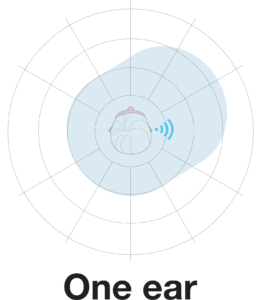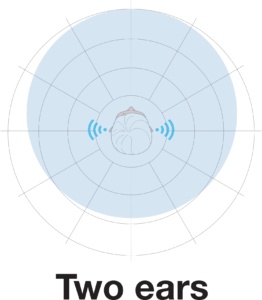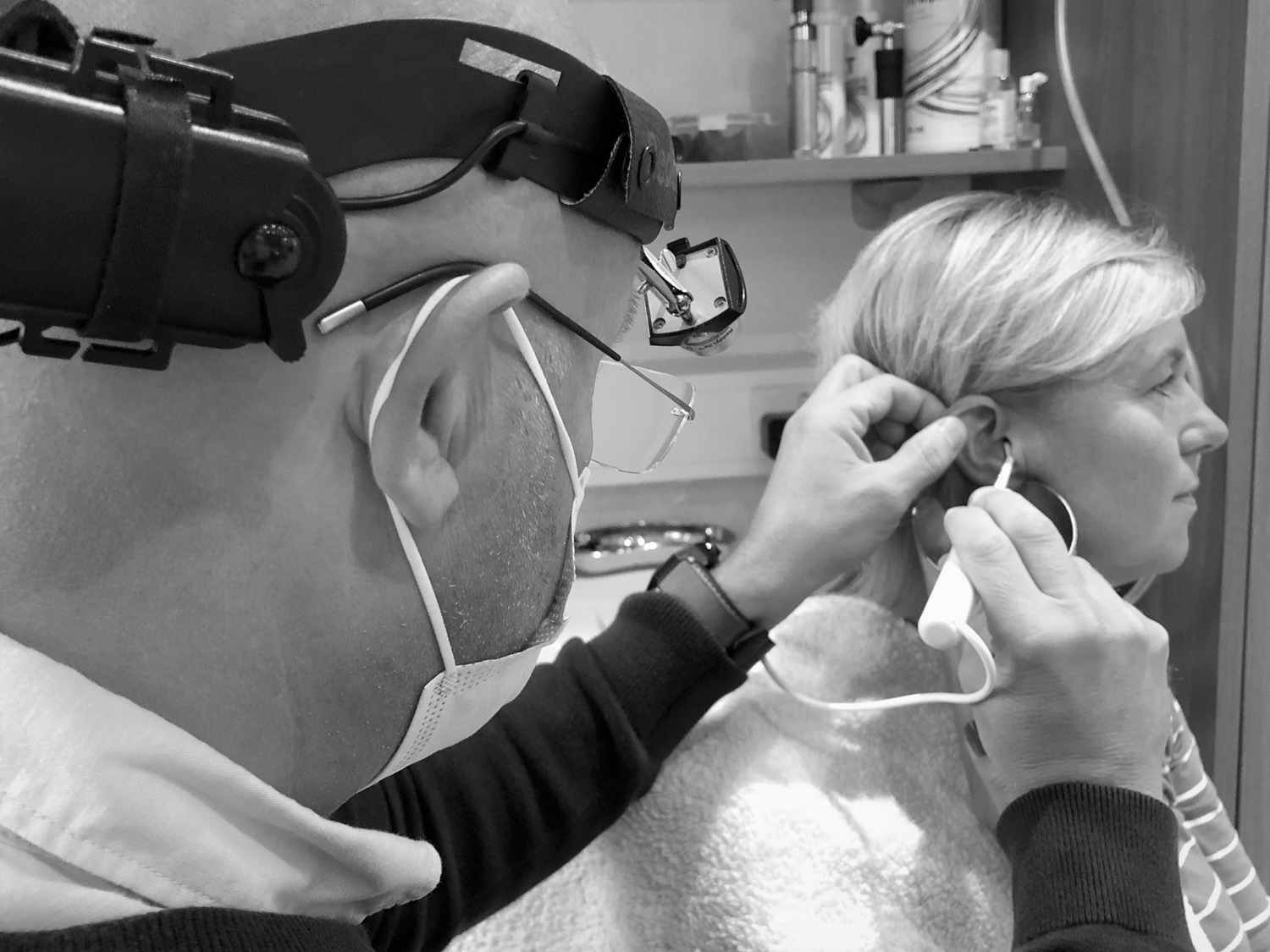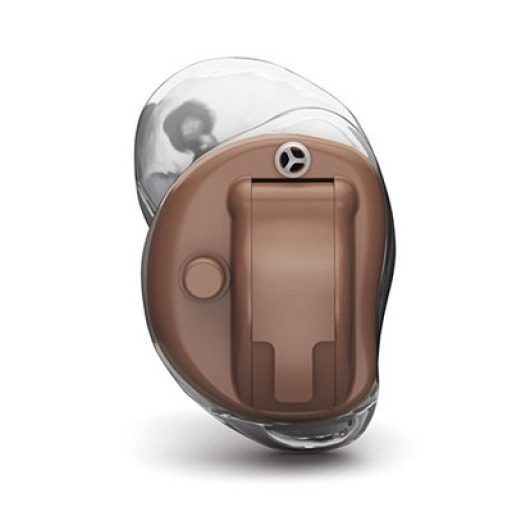Hearing aids

What is a hearing aid?
Why wear hearing aids?
Will I only need one?
Localisation
Better directionality enabling wearers to better locate where sounds are coming from. Our brain instinctively locates a sound source by measuring tiny differences in duration and intensity between each ear. This allows the ears to provide 360º of perception, something unique to our auditory sense. Using one hearing aid when two are need reduces the ability of the brain to localise sound as the diagram (below) shows.


Two ears working together give is the ability to isolate one sound from another. By perceiving differences in duration, pitch and loudness the brain can select a specific sound or voice and concentrate on it, even in the presence of background noise. Voice discrimination in a noisy environment is difficult with two ears, when this is reduced to just one ear the task becomes virtually impossible.
This gives depth perception. Anyone who has enjoyed music, in stereo, compared to mono knows the difference. Mono makes all sounds seem shallow, flat and unnatural. Your brain has the ability to hear in stereo but to do so needs sound input from both ears.
studies have shown that wearing hearing aids can have a masking effect on tinnitus. If the tinnitus is in both ears then naturally there will be a better chance of masking if both ears are corrected.
One ear working less effectively than the other can have a significant impact on daily life. Hearing with one ear is like trying to see with one eye, it’s possible but not as effective. That’s why people do not tend to wear monocles anymore. They became obsolete when eye specialists discovered the importance of balanced vision.
when did you last buy a stereo with one speaker? A dual speaker system will provide for a smoother more natural, balanced and sharper sound. Sounds are evenly distributed between the ears so loud sounds are more comfortable and listening is less tiring and stressful
Each ear sends different signals to the brain, the two halves of your brain work in harmony to give an auditory image. The ear’s sound signals travel up the brain stem via complicated pathways. Some cross over and eventually stimulate the other side of the brain, while others stimulate the same side. If the two halves are not sharing their signals i.e in the case of one ear being aided and the other not, then the brain gradually loses some of its processing ability due to lack of stimulation, as a result auditory deprivation may occur. It is similar to an unused muscle; the unused auditory fibres may atrophy (waste away) – ‘use it or lose it’.
What do hearing aids do?
Get a free hearing test with one of the UK's best hearing care specialists

Book a FREE hearing test

FREE online hearing test

Find your nearest clinic


